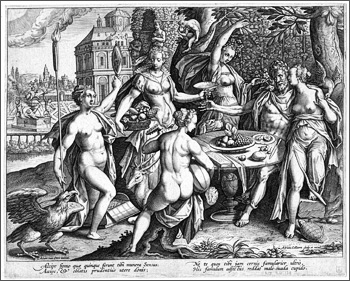The Collaert Dynasty, Part VI

The Collaerts were a true dynasty of engravers - "one of several such in the Netherlands (Galle, Wierix, de Passe, Sadeler). For a very long time Antwerp played a key role in this field. The city, at one and the same time artistic centre and commercial metropolis, provided the ideal artistic and economic environment for artistic enterprises with expansion in mind.
Local talent took part in this expansion, but -"like a magnet - "the citys dynamic image also attracted talent from elsewhere. Engravers were no exception. The Galles, for instance, came from Haarlem, the Collaerts from Brussels. The economic climate was a factor in this dynamism, but so too was the intense interaction among artists themselves and between artists and the intellectual elite - "with the Plantin publishing house as the catalyst. Less favourable to the flourishing of the arts, however, were the religious and political developments and, ultimately, the downturn in the economy. Many artists, and many engravers, eventually left the Southern Netherlands after the iconoclasm in 1566 or after the Fall of Antwerp in 1585, but the Collaerts stayed.
In their output we find an evocation of what preoccupied large sections of society at the time - "such issues as the endeavour to attain intellectual freedom and political peace, and at a later stage the militant religious offensive of the Catholic Counter-Reformation.
Alongside the prints with a political message, we also find works reflecting the great interest in Antiquity, the very pronounced fascination with nature in all its facets (landscapes, flora and fauna, hunting) and - "increasingly - "religion, with many series devoted to biblical scenes and biblical figures (few of us today would be able to identify these characters without the aid of reference books) and Catholic saints. Where this last category of religious prints is concerned, particular religious orders, such as the Augustinians, played an important role as initiators.
All in all this amounts to an overwhelming number of prints, a veritable treasure house of visual material which, through the illustrated volumes of the New Hollstein series, is now being unlocked.
Volume VI: Profane allegories, Portraits, Animals, Botany, ornament, Devices
Published in 2005
Compilers: Ann Diels and Marjolein Leesberg
Editors: Marjolein Leesberg and Arnout Balis
ISBN: 978-90-77551-34-9
328 pp.

